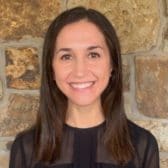
We’re Curious…
The content of California’s ethnic studies curriculum — which will be used as a guide for high schools across the state once a final version is approved next month — has been a subject of controversy since the first draft was released in August 2019.
The curriculum — now in its third draft incorporating a series of revisions in response to thousands of public comment letters — “has been assailed as being anti-capitalist, biased in favor of or against certain groups, and full of politically correct and obscure jargon,” according to The Los Angeles Times.
The issue has taken on a heightened focus in the American Jewish community, with activists criticizing the original draft as antisemitic, biased against Israel and omitting Jewish history. Many Jewish groups have applauded changes made to the curriculum in response to their lobbying efforts, while acknowledging problems in the current draft that still need to be addressed.
The controversy was reignited when Tablet Magazine published a recent article by Emily Benedek, “California is Cleansing Jews From Its History” arguing that the curriculum is problematic on a foundational level. The article prompted a wave of reaction in the Jewish world, ranging from renewed outrage over the problems in the curriculum to claims that the article was negatively impacting advocacy efforts already underway.
With all of the conversation on the issue, we went on a deep dive to investigate: What is the field of ethnic studies? What is inside the third draft, and how are Jewish activists and communal leaders reacting to the latest curriculum?
What Is Ethnic Studies?
The academic field of ethnic studies was born in the 1960s and early 1970s out of student protests at San Francisco State University (SFSU) and the University of California, Berkeley.
The protests were organized by the Third World Liberation Front, a coalition of African American, Latin American and Asian American student organizations calling on their universities to offer courses on the histories of communities of color and raise admissions rates for nonwhite students.
According to the Bay Area NPR station KQED, in 1969, following a five-month student strike, SFSU “agreed to accept virtually all nonwhite applicants for the fall 1969 semester and establish a College of Ethnic Studies, the first in the country, with classes geared toward communities of color.”
StandWithUs notes that some leaders of the Third World Liberation Front also espoused antisemitic views. In 1968, one of the most prominent leaders of the group gave a speech in which he “attacked Jewish people as exploiters of the Negroes in America and South Africa and called for ‘victory to the Arab people’ over Israel,” according to a news report from that period.
Tyler Gregory, the executive director of the Jewish Community Relations Council (JCRC) of San Francisco, which has been involved in efforts to modify the curriculum, argued in a recent Jewish Journal op-ed that although “there are key individuals within the ethnic studies movement clearly opposed to our community’s goals,” the objectives of ethnic studies apply to the Jewish community.
Underscoring that “at its core, ethnic studies is about marginalized communities telling their own stories,” Gregory wrote, “We [the Jewish community] share the understanding that to protect and advance justice for our community, we must define the narrative about our own history, oppression, culture and traditions, rather than allowing others to define our narrative for us.”
On the other hand, critics have suggested the curriculum is driven by a political agenda rather than the goal of expanding understanding among different groups.
Responding to the third draft, Pamela Paresky and Lee Jussim, senior scholars at the Network Contagion Research Institute, argued in The Jewish Journal that while it is true that Jews are included in the current draft, a lesson titled “Jewish Americans: Identity, Intersectionality, and Complicating Ideas of Race” seems more aimed at teaching the concepts of identity, intersectionality and race than the Jewish American experience.
“The narratives that form the foundation of this critical ethnic studies curriculum are explicitly ideological — about whiteness, oppression, colonization, racial privilege, identity and intersectionality,” Paresky and Jussim wrote. “Educators have every right to subscribe to this ideology… But K-12 education is not the place for ideological indoctrination.”
What’s Inside the Current Draft?
The current draft of the curriculum contains two lesson plans on the Jewish community (the first draft did not address the American Jewish experience and did not mention antisemitism).
The first lesson, titled “Antisemitism and Jewish Middle Eastern-Americans,” introduces students to antisemitism through the lens of Jewish Americans from the Middle East and includes the International Holocaust Remembrance Alliance (IHRA) working definition of antisemitism.
The second lesson, titled “Jewish Americans: Identity, Intersectionality, and Complicating Ideas of Race,” examines diversity within the community “to teach students about visible and invisible parts of intersectional identities.”
The lesson plan states, “By examining how Jews have been stigmatized as outsiders, sometimes seen as a racialized other, and sometimes have experienced conditional whiteness and privilege, the lesson will address how conceptions of race and labels change over time and place.”
Later on, the lesson notes that “light-skinned Jews simultaneously experience white privilege,” while “Jews of color like all communities of color face systemic racism, and simultaneously face prejudice and discrimination on the basis of their Jewishness.”
In addition to the inclusion of the two lesson plans, the third draft also removed references to the Boycott, Divestment and Sanctions (BDS) movement, which had been included as a social movement for study, along with Black Lives Matter and #MeToo.
Also removed were rap lyrics implying that Israelis “use the press” in order to “manufacture” public opinion, which California Jewish lawmakers labeled a “classic antisemitic trope about Jewish control of the media.”
While many Jewish groups acknowledged the third draft is a significant improvement compared to previous drafts, there are further revisions they would like to see in the final version.
These desired changes include removing the names of prominent figures associated with antisemitic rhetoric — including Women’s March leader Linda Sarsour and the late White House correspondent Helen Thomas — from a list of “important historical figures among people of color” and incorporating the Jewish lesson plans in the core curriculum, instead of their current placement in a separate section focused on “interethnic bridge-building.”
Not everyone is happy with the changes Jewish groups have persuaded California officials to make. Last week, the original writers of the curriculum demanded their names be removed from the final draft because of what they described as concessions to “right-wing interest groups” and “pro-Israel lobbyists.”
According to reporting by The Jewish News of Northern California, at the heart of the group’s opposition “is the view that the discipline of ethnic studies… must adhere to its radical roots by including strong critiques of capitalism and colonialism, concepts that some critics say are too ideologically charged for high school students or are presented in a one-sided manner in the model.”
Opponents of the revisions have also argued that “the movement to broaden the umbrella of ethnic groups covered to include Jews and Armenians, for example, bastardizes the curriculum from its original focus,” according to The Jewish News of Northern California.
Perspectives From the Jewish World
In her piece for Tablet, Emily Benedek highlighted the connection between the Critical Ethnic Studies Association (CESA), a national organization of academics and activists engaged in the field, and the BDS movement, noting that CESA’s 13 founding members are BDS activists and that the group passed a resolution to boycott Israeli academic institutions in 2014.
Quoting Tammi Rossman-Benjamin, director of AMCHA Initiative, which fights campus antisemitism, the article highlighted that the largest percentage of American academics who support boycotting Israel come from the ethnic studies field.
Throughout the piece, Benedek took issue with critical race theory, the framework that she said underpins the curriculum. In an author’s note she posted in response to criticism that the article focused on the original draft and contained misleading or inaccurate claims, Benedek wrote, “The critical race theory framework is what is dangerous, and, as I tried to show with my reporting, it is fundamental to every single draft that’s so far been produced.”
The Progressive Zionists of California (PZC), which has been involved in efforts to modify the curriculum, said in a blog post that Tablet should retract the article because it “contains numerous factual errors and endangers the efforts of Jewish activists to curb antisemitism in public schools.”
For example, Benedek claimed that a lesson plan in the current draft taught that “Mizrahi Jews coming to the U.S. from Arab lands were mistreated by ‘white’ Ashkenazim,” but PZC said this is not present in the lesson.
The group added that although there are ongoing issues in the curriculum, overall, “the fight to remove antisemitism from the [curriculum] has been a model for Jewish community engagement,” noting that “over 80 organizations have fought nearly every day to improve this working document” and that improvements made constitute a “tremendous success.”
Sarah Levin, the executive director of JIMENA: Jews Indigenous to the Middle East and North Africa, said in an email that she is happy with how Jewish institutions across California worked together to remove references to BDS and add “a meaningful lesson on antisemitism.”
In a Jewish News Syndicate (JNS) op-ed, Roz Rothstein, the co-founder and CEO of StandWithUs, agreed that Jewish groups and students have persuaded California officials to make significant improvements to the curriculum, adding that ongoing issues remain.
Rothstein also underscored that although “a significant faction in the field of ethnic studies…institutionally promotes anti-Zionism and discriminatory boycotts against Israel,” there are also examples of “inclusive ethnic-studies curriculums that reject one-sided political agendas and promote critical thinking.”
In addition to the American Jewish community, Sikh-American, Armenian-American, Hindu-American, Korean-American and other groups have also called for their communities to be included or have a larger presence in the materials.
The Bottom Line
Jewish groups that have been involved in this issue over the past 18 months seem to agree that the third draft is a significant improvement compared to earlier drafts.
Jewish advocates and groups across California and the country — like Tyler Gregory (JCRC San Francisco), Sarah Levin (JIMENA) and Roz Rothstein (StandWithUs) — have worked with state officials to remove antisemitic and anti-Israel content and add lessons on the Jewish community and antisemitism. These groups also agree that work remains to be done as the curriculum is finalized ahead of a final vote next month.
Originally Published Feb 8, 2021 05:33PM EST


